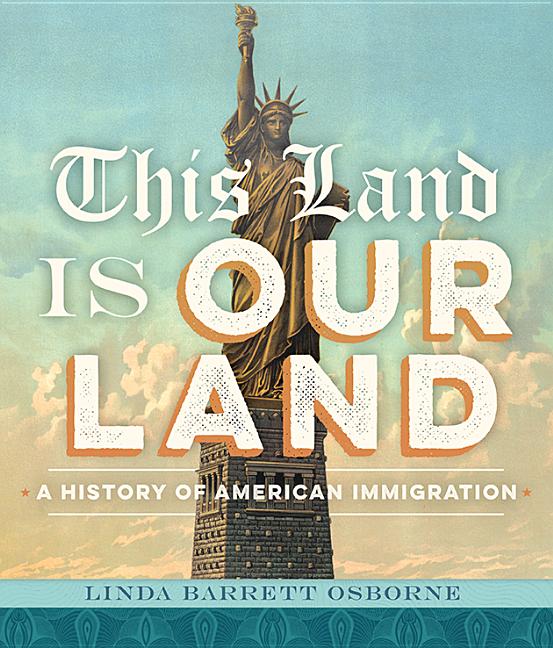Book Descriptions
for This Land Is Our Land by Linda Barrett Osborne
From Cooperative Children's Book Center (CCBC)
An account of the history of immigration in the United States from the time the first Europeans arrived shows how people have come for similar reasons across four centuries—religious freedom and/or economic opportunity, or as refugees escaping political persecution, or more recently, war. It also shows how each group after those first immigrants were met with various levels of distrust and suspicion. Chapters look at specific groups that came in large numbers, including the Chinese, the Irish, Jews from eastern Europe, and Latin Americans, and how the government responded with changing policies over time. Policies sought to either exclude, as in the case of the Chinese, or to limit immigrants coming from places other than western Europe in response to xenophobia fueled by stereotypes and fear: that the newcomers were dangerous, or would take away jobs, or would never assimilate—fears that continue to be voiced about immigrants today. A timeline of immigration and immigration policy, extensive source material, and an index are provided at the end of a work that includes numerous photographs. (Age 12 and older)
CCBC Choices 2017. © Cooperative Children's Book Center, Univ. of Wisconsin - Madison, 2017. Used with permission.
From the Publisher
A YALSA Excellence in Nonfiction Finalist, Linda Barrett Osborne’s This Land is Our Land “explores the history of American immigration from the early colonization of the continent to the contemporary discussions involving undocumented aliens.”*
American attitudes toward immigrants are paradoxical. On the one hand, we see our country as a haven for the poor and oppressed; anyone, no matter his or her background, can find freedom here and achieve the “American Dream.” On the other hand, depending on prevailing economic conditions, fluctuating feelings about race and ethnicity, and fear of foreign political and labor agitation, we set boundaries and restrictions on who may come to this country and whether they may stay as citizens.
This book explores the way government policy and popular responses to immigrant groups evolved throughout US history, particularly between 1800 and 1965. The book concludes with a summary of events up to contemporary times, as immigration again becomes a hot-button issue.
“Exceptional . . . Outstanding archival photographs and illustrations complement the comprehensive text and encourage thoughtful discussion . . . An excellent time line and end notes and a thorough bibliography make this an effective research tool.” —*School Library Journal (Starred Review)
American attitudes toward immigrants are paradoxical. On the one hand, we see our country as a haven for the poor and oppressed; anyone, no matter his or her background, can find freedom here and achieve the “American Dream.” On the other hand, depending on prevailing economic conditions, fluctuating feelings about race and ethnicity, and fear of foreign political and labor agitation, we set boundaries and restrictions on who may come to this country and whether they may stay as citizens.
This book explores the way government policy and popular responses to immigrant groups evolved throughout US history, particularly between 1800 and 1965. The book concludes with a summary of events up to contemporary times, as immigration again becomes a hot-button issue.
“Exceptional . . . Outstanding archival photographs and illustrations complement the comprehensive text and encourage thoughtful discussion . . . An excellent time line and end notes and a thorough bibliography make this an effective research tool.” —*School Library Journal (Starred Review)
Publisher description retrieved from Google Books.


